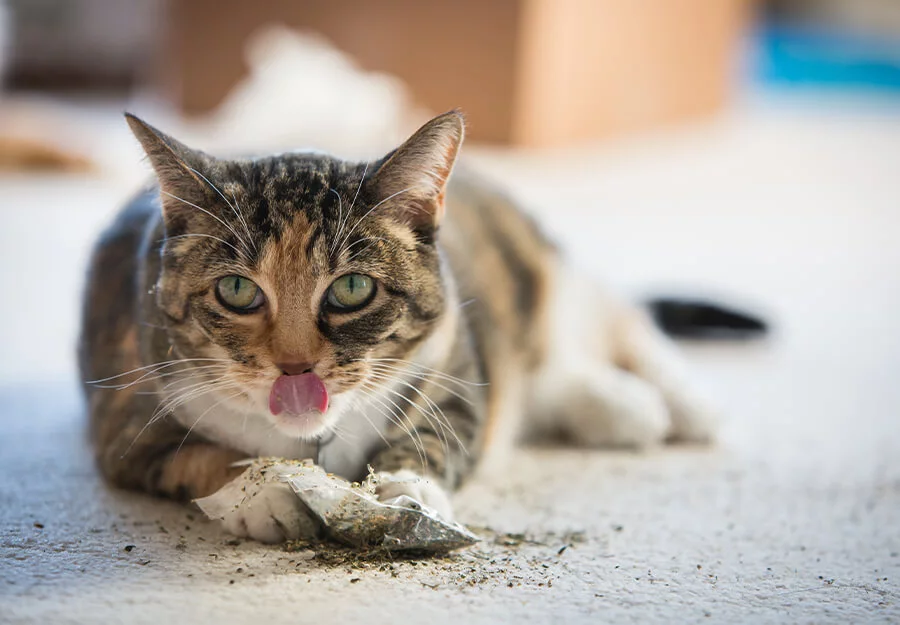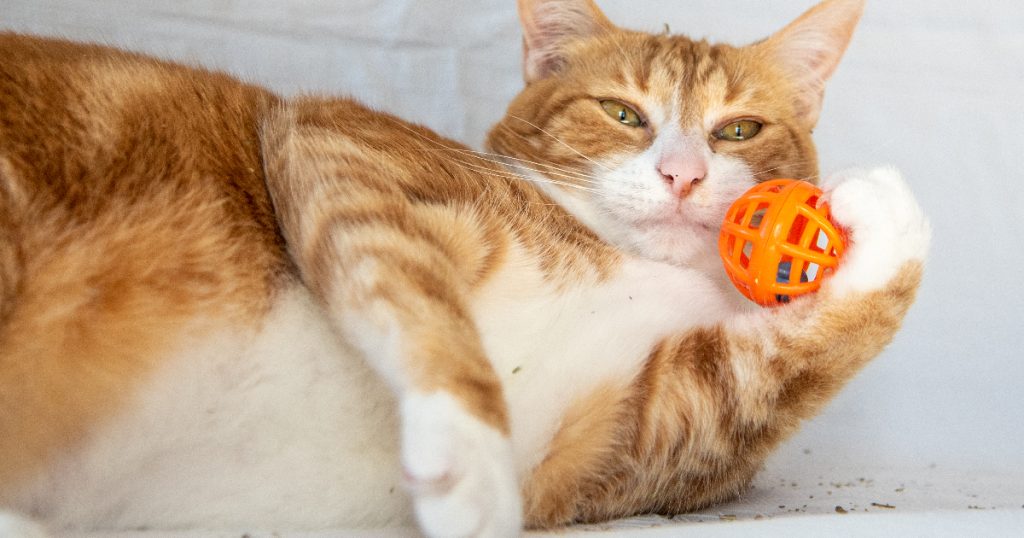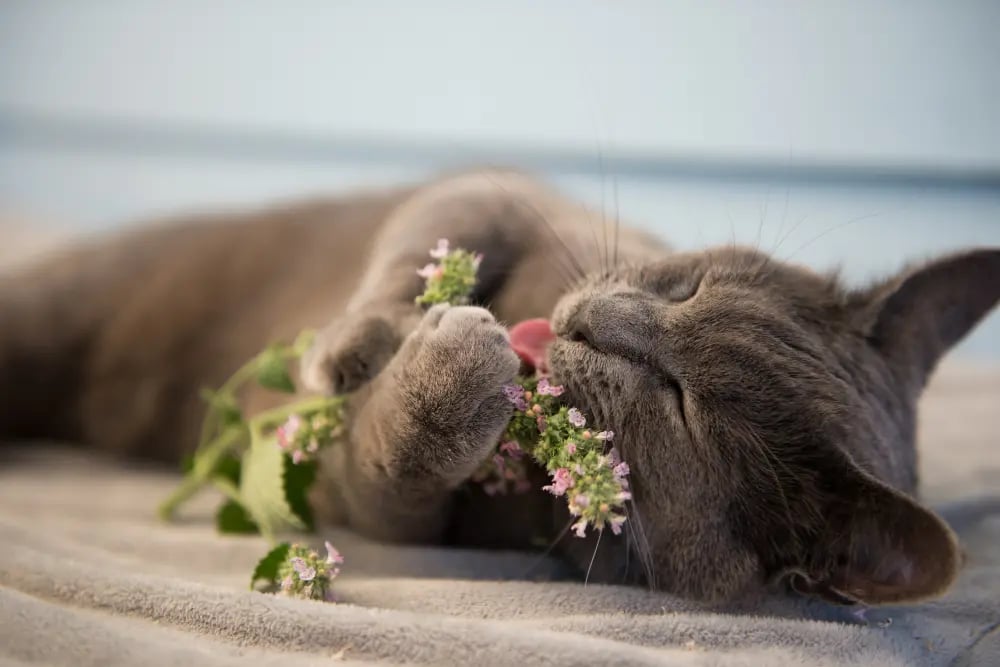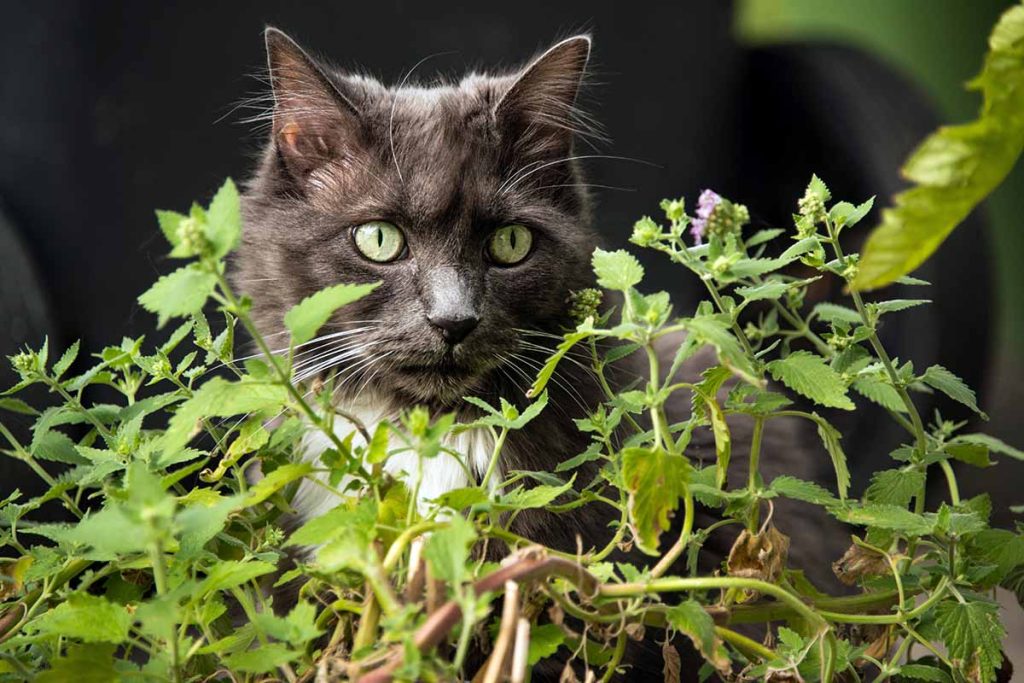If you’ve ever wondered which catnip is the best for your furry feline friend, look no further! “The Ultimate Guide to the Best Catnip for your Feline Friend” has got you covered. In this comprehensive guide, you’ll discover everything you need to know about choosing the perfect catnip product for your beloved pet. Whether you’re a seasoned cat owner or a first-time feline friend, this article will provide you with valuable insights on the various types of catnip available and how to select the one that will keep your kitty entertained and happy. Get ready to enhance your cat’s playtime and delight their senses with the best catnip on the market!
Understanding Catnip
What is catnip?
Catnip, also known by its scientific name Nepeta cataria, is a perennial herb that belongs to the mint family. It is a unique plant that produces a chemical compound called nepetalactone, which is what attracts and affects cats. Catnip is native to Europe but can now be found growing in various parts of the world.
Why do cats love catnip?
Cats have an incredible sense of smell, and catnip releases a strong aroma that is irresistible to most felines. When cats come into contact with catnip, whether by smelling or ingesting it, the nepetalactone in the herb stimulates receptors in their noses. This interaction triggers a series of reactions in their brains, leading to a distinct behavioral response.
Is catnip safe for cats?
Catnip is generally considered safe for cats and is non-addictive. However, it is important to note that while catnip is harmless to cats, it may cause mild gastrointestinal upset if ingested in large quantities. In some rare cases, cats may also experience an allergic reaction to catnip. If you notice any concerning symptoms or unusual behavior in your cat after exposure to catnip, it is best to consult with your veterinarian.
How does catnip affect cats?
Catnip affects cats in various ways, and the response can differ from one cat to another. The most common reaction is a state of euphoria, where cats become more active and playful. Some cats may roll around, purr, or exhibit increased energy levels. Others may become more relaxed and sedated. It is worth noting that the effects of catnip are temporary, usually lasting between 5 to 15 minutes.
Different Types of Catnip
Common catnip varieties
There are several catnip varieties available, with the most common being Nepeta cataria. Other popular varieties include Nepeta faassenii, Nepeta mussinii, and Nepeta transcaucasica. Each variety may have slightly different levels of nepetalactone, which could potentially affect the intensity of the cat’s response.
Organic vs. non-organic catnip
When choosing catnip for your furry friend, you may come across organic and non-organic options. Organic catnip is grown without the use of chemical pesticides or fertilizers, making it a more natural choice. Non-organic catnip, on the other hand, may contain traces of chemicals that could potentially be harmful to your cat. If you prioritize a chemical-free option, organic catnip is worth considering.
Dried vs. fresh catnip
Catnip can be purchased in both dried and fresh forms. Dried catnip is widely available and has a longer shelf life. It is commonly used in toys and accessories for cats. On the other hand, fresh catnip is harvested and used immediately. Fresh catnip may have a more potent aroma, which some cats find particularly appealing. However, fresh catnip tends to wilt quickly and may not be as easily accessible as dried catnip.
Choosing the Best Catnip for Your Cat
Consider your cat’s preferences
Every cat has its own unique preferences when it comes to catnip. Some cats may prefer the aroma of dried catnip, while others may be more attracted to the fresh scent. Additionally, some cats may enjoy playing with catnip-infused toys, while others may prefer rolling around in catnip-filled pillows. Observe your cat’s reaction to different types of catnip and choose the option that brings them the most joy.
Check for freshness and quality
Whether you opt for dried or fresh catnip, it is crucial to choose a product that is fresh and of high quality. When purchasing dried catnip, check for vibrant colors and a strong, aromatic scent. If you decide to go with fresh catnip, ensure that the leaves are green and plump. Avoid catnip that appears dull, faded, or has a weak smell, as these qualities could indicate a lack of freshness.
Avoid catnip with additives or preservatives
When buying catnip products, it is advisable to choose those without any additives or preservatives. Some manufacturers may add fillers or artificial substances to enhance the scent or extend the product’s shelf life. However, these additives can potentially be harmful to cats when ingested. Opt for catnip that is free from any additional ingredients to ensure the safety and well-being of your furry companion.
Top Brands of Catnip
KONG Naturals Premium Catnip
KONG Naturals Premium Catnip is widely regarded as one of the best catnip brands on the market. Harvested at the peak of its potency, this catnip is all-natural and free from pesticides. It comes in a resealable tin, ensuring the freshness of the product over time. KONG Naturals Premium Catnip is highly aromatic, making it irresistible to most cats and a favorite among cat owners.
Yeowww! Catnip
Another highly popular brand, Yeowww! Catnip, is known for its quality and potency. Made from organically grown catnip leaves, Yeowww! Catnip offers a range of catnip-infused toys, sprays, and loose leaf options. The brand uses a special leaf-and-blossom blend, ensuring a potent and long-lasting effect. Yeowww! Catnip products have received rave reviews from cat owners worldwide.
OurPets Cosmic Catnip
OurPets Cosmic Catnip is a trusted brand among cat owners and offers a wide variety of catnip products. From catnip-filled toys to loose leaf catnip, their products are made using premium North American catnip that is aromatic and high-quality. The brand takes pride in its potency, ensuring an enjoyable experience for cats of all ages.
SmartyKat Certified Organic Catnip
If you prefer organic catnip, SmartyKat Certified Organic Catnip is a fantastic option. This brand offers organic catnip in various forms, including loose leaf catnip and catnip sprays. Produced without the use of pesticides, SmartyKat catnip is safe and non-toxic. The organic catnip spray is especially useful for refreshing cat toys or rejuvenating scratching posts.
Catnip Toys and Accessories
Catnip-infused toys
Catnip-infused toys are a popular choice among cat owners looking to provide their feline friends with entertainment and stimulation. These toys are typically filled with dried catnip or stuffed with catnip-infused stuffing. Catnip toys come in various shapes and sizes, from plush mice to interactive puzzle toys. Not only do they provide hours of fun for your cat, but they also allow them to reap the benefits of catnip in a safe and controlled manner.
Catnip sprays and mists
For cat owners who want to enhance their cat’s environment with the scent of catnip, catnip sprays and mists are a great option. These products contain diluted catnip oil that can be applied to scratching posts, bedding, or toys. The scent of catnip can attract cats and encourage them to investigate or play in those areas. Catnip sprays are also handy for revitalizing old cat toys that may have lost their appeal.
Catnip-filled pillows and mats
Catnip-filled pillows and mats are perfect for cats who enjoy rolling or lounging around. These soft and cozy accessories are filled with dried catnip, providing a comfortable resting spot for your furry friend while also stimulating their senses. Catnip pillows and mats can be placed strategically around the house to create designated spots for your cat to relax and enjoy the benefits of catnip.
DIY Catnip Solutions
Making homemade catnip toys
Creating homemade catnip toys can be a fun and rewarding activity for cat owners. There are several simple DIY options that you can explore. One popular method involves filling a small sock or cloth bag with dried catnip and tying it securely. You can also sew a small plush toy and stuff it with dried catnip. Homemade catnip toys allow you to customize the shape, size, and amount of catnip, ensuring a personalized experience for your cat.
Creating a catnip spray at home
If you prefer the convenience of a catnip spray but want to avoid store-bought options, you can easily create your own catnip spray at home. Start by steeping dried catnip in hot water for several minutes to extract the essential oils. Once the mixture has cooled down, strain the liquid and transfer it into a spray bottle. You now have a homemade catnip spray that can be used to freshen up toys, scratching posts, or any area you want to entice your cat.
Growing your own catnip
For those with a green thumb, growing your own catnip can be a rewarding experience. Catnip plants are relatively easy to grow and can be cultivated in containers or directly in the ground. Ensure that the plant receives plenty of sunlight and water regularly. Once the catnip plant reaches maturity, you can harvest the leaves and flowers. Fresh catnip from your own garden will provide an extra level of freshness and enjoyment for your feline friend.
Using Catnip for Behavioral Training
Using catnip to encourage play
Catnip is a fantastic tool for encouraging play and exercise in cats. You can use catnip-infused toys to capture your cat’s attention and entice them to engage in interactive play. Tossing a toy filled with catnip or hiding it for your cat to find can stimulate their natural hunting instincts and keep them entertained for hours. Regular play sessions with catnip toys can help prevent boredom and promote overall mental and physical well-being.
Using catnip to promote positive behaviors
Catnip can be used as a positive reinforcement tool to reward and encourage desired behaviors in cats. For example, if you want to encourage your cat to use a scratching post instead of your furniture, you can sprinkle some dried catnip on the post. The enticing scent of catnip will attract your cat and encourage them to scratch and play on the designated post. Similarly, you can reward your cat with a catnip-filled toy or treat after they have successfully learned a new trick or command.
Using catnip for relaxation and stress relief
Catnip has a calming effect on many cats, making it an excellent aid for relaxation and stress relief. If your cat is experiencing anxiety or is in a stressful situation, such as during a vet visit or a long car ride, offering a catnip-filled toy or mat can help alleviate their anxiety. The soothing properties of catnip can help your cat feel more at ease and provide them with a sense of comfort and security.
Introducing Catnip to Kittens
At what age can kittens have catnip?
Kittens do not typically respond to catnip until they are around three to six months old. This is because the receptors in their brains that respond to the chemicals in catnip are not fully developed until they reach this age. It is recommended to wait until your kitten is around six months old before introducing them to catnip.
How to introduce catnip to kittens
To introduce catnip to your kitten, start by offering them a small toy or cloth that has been exposed to a small amount of dried catnip. Allow them to sniff and play with the catnip-infused item under supervision. Watch for any signs of allergies or adverse reactions. It is essential to gradually introduce catnip to kittens and monitor their response to ensure they are not overwhelmed or have negative effects.
Monitoring your kitten’s reaction to catnip
Observe how your kitten reacts to catnip and carefully monitor their behavior. Some kittens may exhibit heightened playfulness and increased energy levels, while others may not show any reaction at all. Like adult cats, the effects of catnip on kittens can vary. Stay attuned to your kitten’s behavior and ensure they are not becoming overly stimulated or exhibiting any signs of distress.
Catnip Alternatives
Valerian root
Valerian root is a herbal alternative to catnip that has a similar effect on cats. It produces a calming and soothing effect when smelled or ingested by cats. Some cats may even have a stronger response to valerian root than catnip. Valerian root is available in various forms, including dried roots, powdered capsules, and oil extracts. It is important to note that valerian root has a strong odor that some cat owners may find off-putting.
Silver vine
Silver vine, also known as actinidia polygama, is another herb that can have a similar effect on cats as catnip. Native to East Asia, silver vine has been used for centuries to stimulate cats’ sense of playfulness and curiosity. Silver vine is available in the form of dried leaves or powder. Cats who are not typically responsive to catnip may still exhibit a strong reaction to silver vine, making it an excellent alternative for feline enrichment.
Honeysuckle
Honeysuckle is a plant that produces a scent that some cats find highly appealing. It is believed to have a similar effect to catnip, eliciting playful and energetic behavior. Dried honeysuckle wood or honeysuckle-infused toys can be offered to cats to observe their response. It is worth mentioning that not all cats react to honeysuckle, so it may be a trial and error process to determine your cat’s preference.
Tatarian honeysuckle
Tatarian honeysuckle, also known as Lonicera tatarica, is another plant that can be used as an alternative to catnip. The leaves and bark of this plant contain compounds that mimic the effects of catnip. Dried Tatarian honeysuckle chips or powder can be used to engage your cat in play or simply to provide them with a source of sensory enrichment. As with other catnip alternatives, it is important to observe your cat’s response before incorporating it into their playtime routine.
FAQs about Catnip
Can all cats smell catnip?
Not all cats respond to catnip, as the sensitivity to nepetalactone, the active chemical in catnip, is hereditary. Approximately 50-75% of cats possess the genetic predisposition to respond to catnip, while the remaining percentage does not have a reaction. Kittens and younger cats may also not exhibit a response until they reach the age of three to six months.
How long does the effect of catnip last?
The effects of catnip can vary in duration, typically lasting between 5 to 15 minutes. Cats may exhibit different behaviors during this timeframe, including increased playfulness, rolling, rubbing, or purring. After the initial reaction, most cats will become temporarily immune to the effects of catnip for a period of time, ranging from a few hours to a few days.
Can cats become addicted to catnip?
Catnip is not addictive for cats, and prolonged exposure or excessive use will not result in dependency or withdrawal symptoms. Cats that have a strong reaction to catnip may exhibit an intense desire for it, but this should not be confused with addiction. It is important to moderate your cat’s interaction with catnip to prevent overstimulation or potential gastrointestinal upset.
Can catnip be used as a training tool?
Catnip can be used as a training tool to reinforce desired behaviors or encourage play. By using catnip-infused toys or by incorporating catnip as a reward during training sessions, you can motivate your cat to learn new commands or engage in positive behaviors. However, it is worth noting that the effects of catnip are temporary, so it may not be effective for long-term training purposes.
In conclusion, catnip can be a wonderful addition to your cat’s life, providing them with entertainment, relaxation, and mental stimulation. Understanding the different types of catnip and choosing the best option for your feline friend is crucial to ensure a positive and enjoyable experience. Whether you opt for dried or fresh catnip, DIY solutions, or explore catnip alternatives, always prioritize your cat’s safety and well-being. Catnip should be used in moderation and under supervision to prevent overexposure or any potential adverse reactions. With the right approach, catnip can become a source of joy and enrichment for both you and your furry companion.










